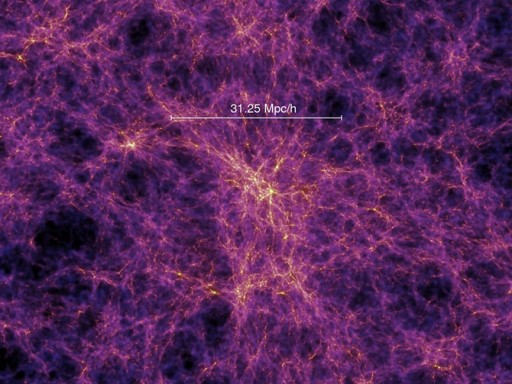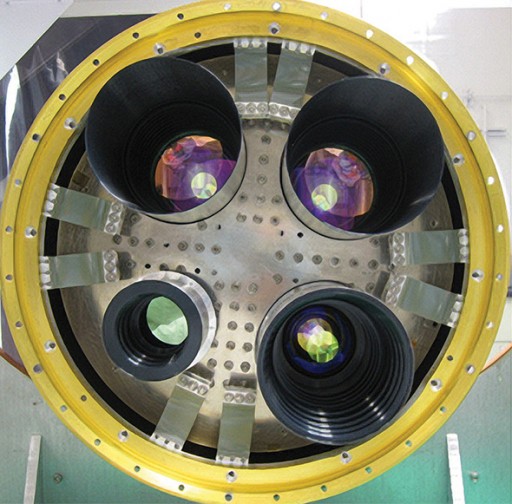NASA experiment to examine the beginnings of the universe
May 23, 2013

Numerical simulation of the density of matter when the universe was one billion years old. Galaxies formation follows the gravitational wells produced by dark matter, where hydrogen gas coalesces, and the first stars ignite. CIBER studies the total sky brightness, to probe the component from first stars and galaxies using spectral signatures, and searches for the distinctive spatial pattern seen in this image, produced by large-scale structures from dark matter. (Credit: Jamie Bock/Caltech)
When did the first stars and galaxies form in the universe? How brightly did they burn their nuclear fuel?
Scientists will seek to gain answers to these questions with the launch of the Cosmic Infrared Background ExpeRIment (CIBER) on a Black Brant XII suborbital sounding rocket between 11 and 11:59 p.m. EDT, June 4 from the Wallops Flight Facility in Virginia.
Jamie Bock, CIBER principal investigator from the California Institute of Technology, said, “The first massive stars to form in the universe produced copious ultraviolet light that ionized gas from neutral hydrogen. CIBER observes in the near infrared, as the expansion of the universe stretched the original short ultraviolet wavelengths to long near-infrared wavelengths today.
“CIBER investigates two telltale signatures of first star formation: the total brightness of the sky after subtracting all foregrounds, and a distinctive pattern of spatial variations.”
“The objectives of the experiment are of fundamental importance for astrophysics, to probe the process of first galaxy formation, but the measurement is also extremely difficult technically,” he noted.
This will be the fourth flight for CIBER on a NASA sounding rocket. The previous launches were in 2009, 2010, and 2012 from the White Sands Missile Range, New Mexico. After each flight the experiment or payload was recovered for post-calibrations and re-flight.

The entrance of the CIBER optics, showing two near-infrared wide-field cameras (top), an absolute spectrometer (lower left) and a Fraunhofer line spectrometer (lower right) (credit: Jamie Bock/Caltech)
CIBER is a cooperative instrument designed and built by the California Institute of Technology, University of California Irvine, the Japan Aerospace Exploration Agency (JAXA), and the Korean Astronomy and Space Science Institute (KASI). The same team is also developing an improved follow-on experiment, with more capable optics and detector arrays, that will be completed next year.